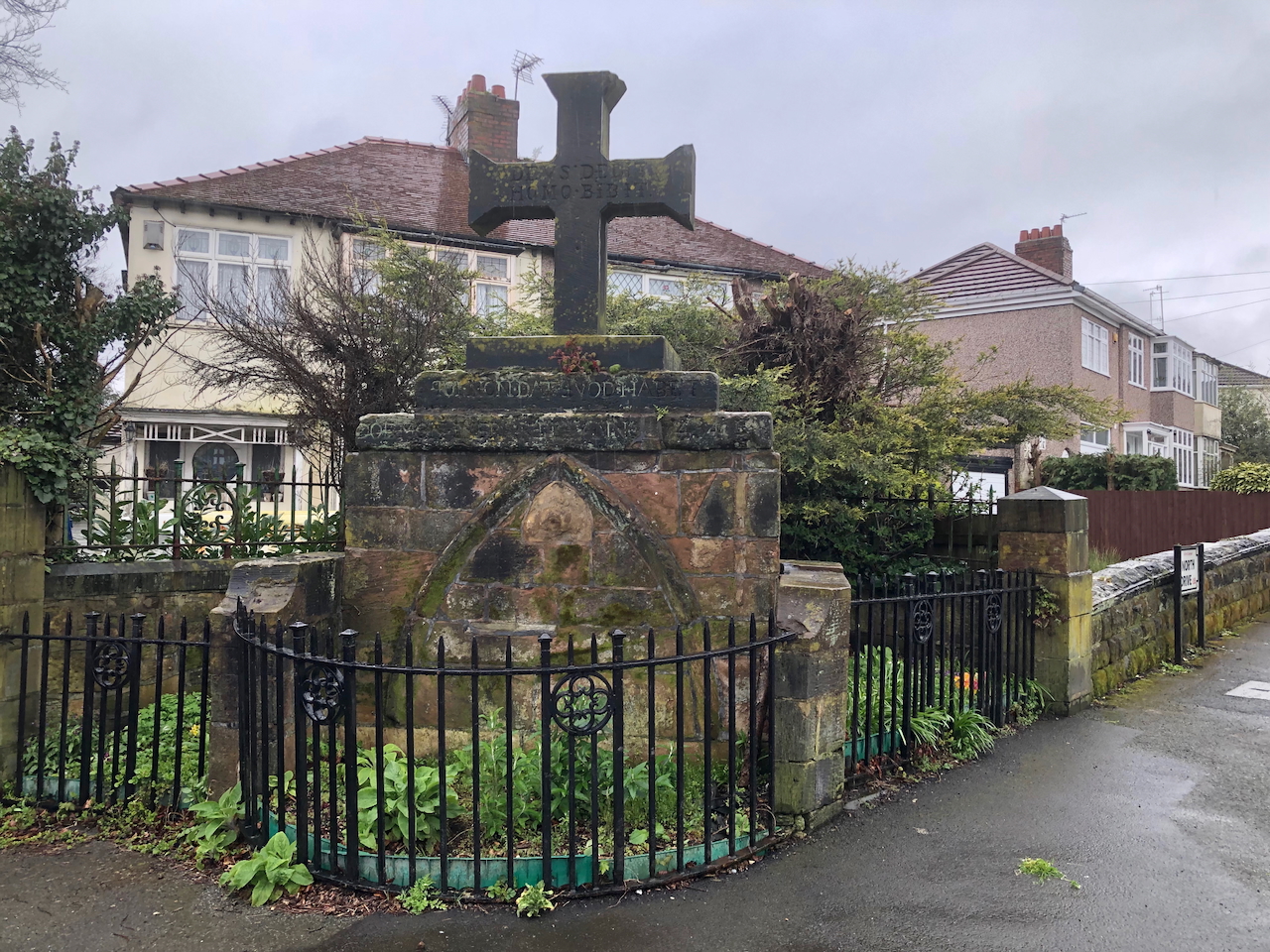Wavertree Cross, and the well it covers, can be found close to the village green. This is an important junction around which Wavertree probably grew up. The village’s green is one of the last commonly-held village greens in the country, and this status was apparently guaranteed in the Enclosure Act of 1768.
The junction and the spring which fed the well were likely among the attractions for establishing a settlement around here.
Lake Road reveals that the spring which fed the well was once associated with a larger body of water. The source of the spring was a little to the north west (see quotes below) and flowed down to the lake and well, until the well’s structure was moved towards the road to avoid a path across the gardens of Lake House (now destroyed, though the buttressed walls of the garden can still be seen on North Drive).
Salisbury Merestones
The small stone marked with an ‘S’ is a ‘merestone‘, marking a property boundary (compare the word with Mersey, the name of which comes from ‘boundary river’). The ‘S’ represents the Marquess of Salisbury who once owned land around here. There were originally several markers, installed when the Marquess disagreed with a project of the Health Board to clear the weed-infested lake and plant trees. The stones reinforced the idea that this area was beyond the common land of the green, and belonged to him. In the end the Marquess allowed the project, but one of these stones remains.
An inscription on the well claims it dates from 1414, but there are no concrete records of this origin, and changes and restorations have been made over the years. For example, in 1834 a pump was added.
The nearby house known as Monkswell was demolished in the early 20th century, and the well given to the city. It was listed in 1952. The lake was filled in 1929, both for being deemed dangerous and for blocking the proposed tram route up Mill Lane.
There are the usual legends of a tunnel running underground from the well to the remains of a nearby ecclesiastical institution, but none of these can be corroborated.
The inscription on the cross (possibly re-carved in recent times) reads: Deus dedit homo bibit, meaning ‘God has given, man has drunk’.
Ancient Cross
From The Ancient Crosses of Lancashire by Henry Taylor:
Considerable doubt exists as to the history of this structure. Three views of it are given in the Binns Collection in the Liverpool Free Library; two of them are practically identical, showing an Early Gothic arched recess in a wall, below which is a well square in shape surrounded by masonry. Above the arch are indications of an inscription. A later engraving shows the arch surmounted by a cross bearing the inscription, “Deus dedit homo bibit.” A recent photograph appears to indicate that the whole structure has been rebuilt since the date of the last engraving, with sundry variations from the original design, which shows an ancient structure in ruins.
Mr. Cox (Historic Society of Lancashire and Cheshire for 1895) writes:
“An old man remembered this well open, and told me that the descent to it was by several steps. The source of the water is not at the well, but under the lawn of ‘Monkswell,’ and a passage led to it. The inscription formerly over it is well known – ‘Qui non dat quod habet, Daemon infra videt. Anno 1414.'”
In the rebuilt structure this inscription appears to have been inaccurately copied.
Hope, in his Holy Wells of England, gives the same inscription as Mr. Cox, and adds,
“Tradition says at one period there was a cross above it inscribed ‘Deus dedit homo bibit,’ and that all travellers gave alms on drinking. If they omitted to do so, a devil who was chained at the bottom laughed.”
I have not as yet come upon any documentary evidence to prove whether or not the structure represented by the Binns engravings is of really ancient date.
